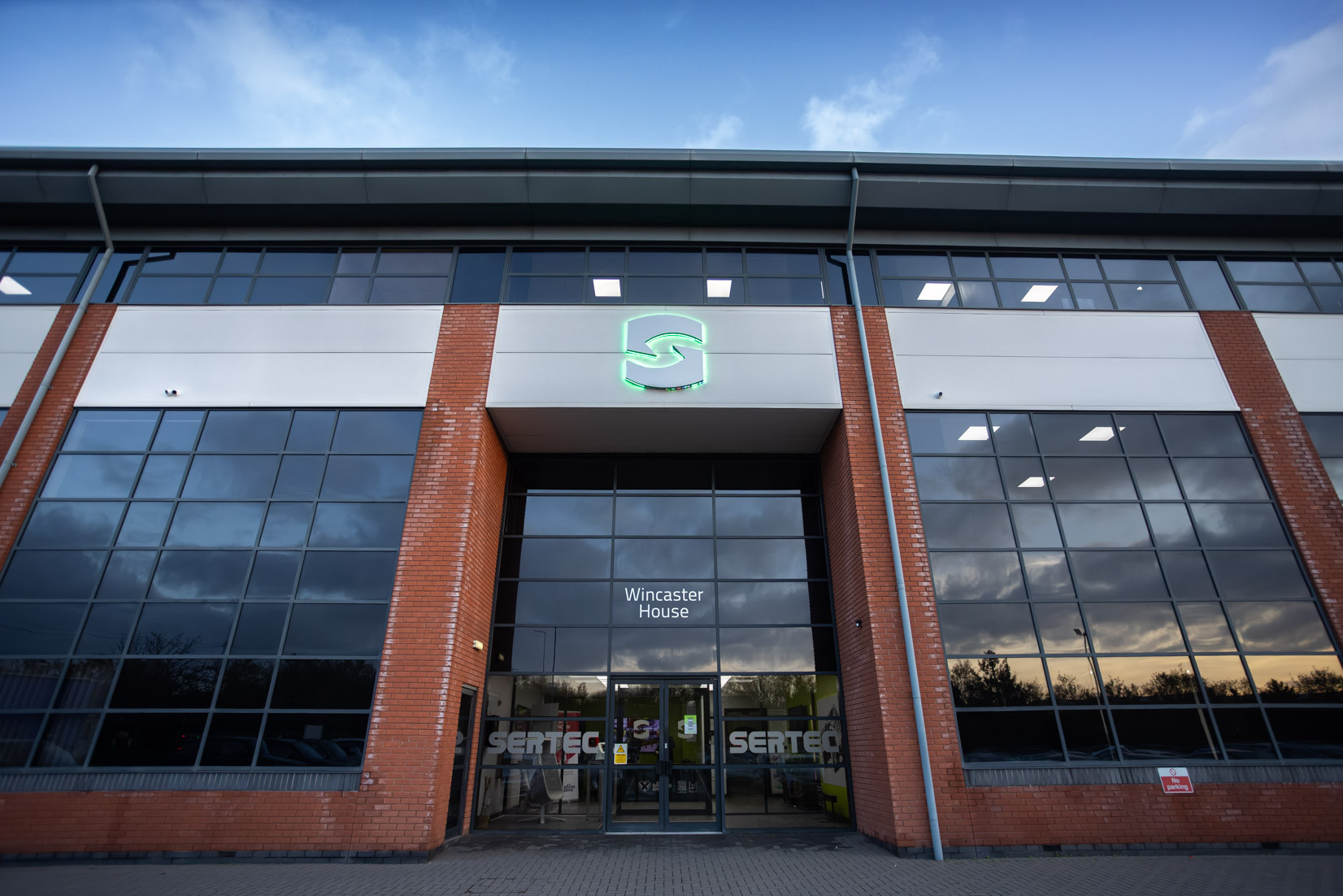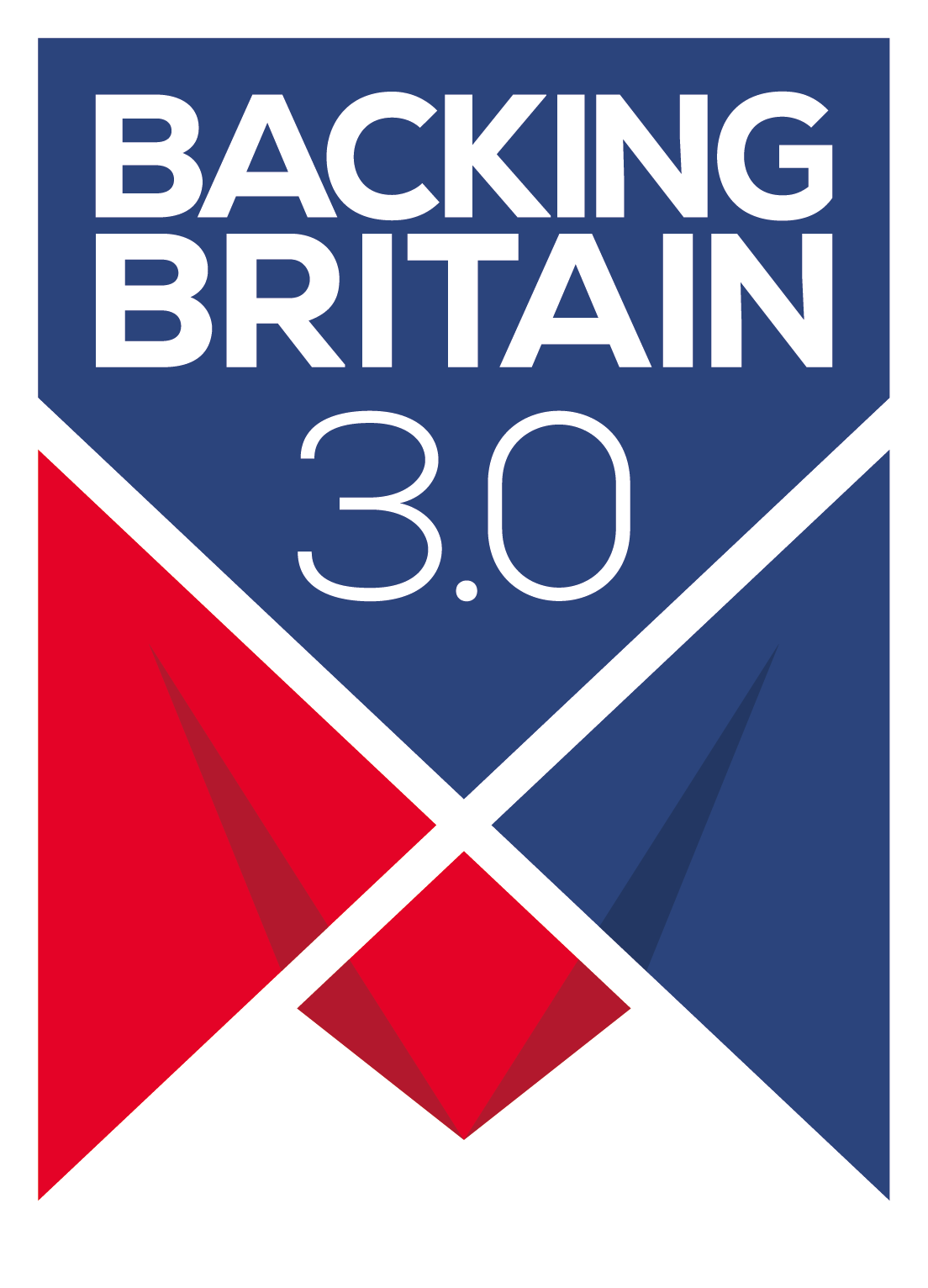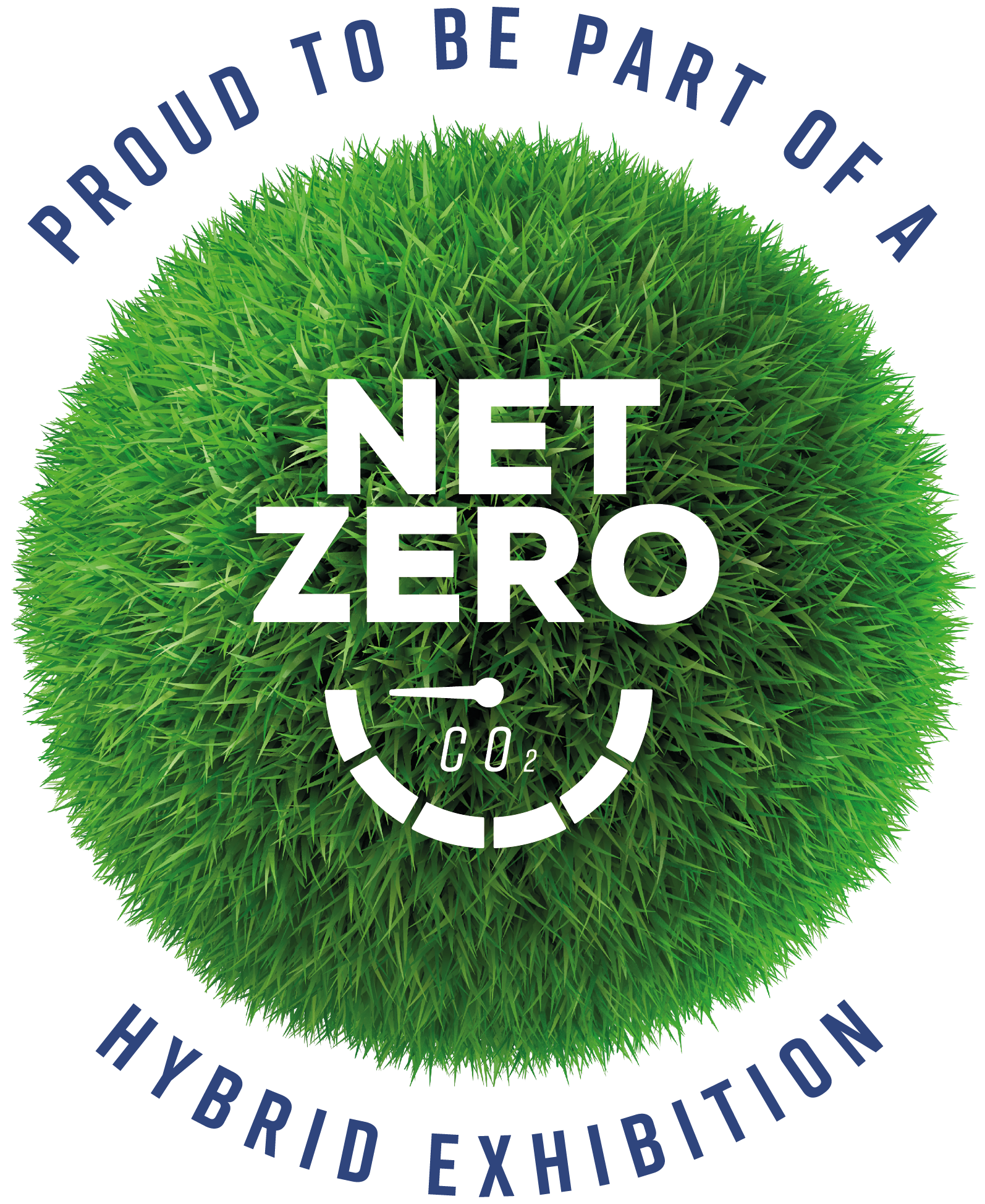
Sertec Hosts Made in Group for a Landmark Factory Tour
Every factory tour tells a story, but some leave a deeper impression. Sertec’s event at Wincaster House was one of those moments, offering members a rare, close look at a business evolving at remarkable pace while staying grounded in a culture that has become its defining strength. On a crisp November morning, members from Made in Yorkshire, Made in the Midlands, and Made in the South West arrived to experience a business in motion: one balancing six decades of heritage with a confident step into electrification and future-ready manufacturing.
Networking set the tone for the day: engaged conversations, new introductions, and a shared curiosity about Sertec’s transformation. Among those speaking with members was Sertec CEO Grant Adams, whose leadership has been central to Sertec’s modern evolution. His presence carried particular resonance as Sertec prepares for his transition to Chairman in January 2026.
When everyone gathered, Jason Pitt, CEO of Made in Group, opened with a message that resonated deeply. He spoke about the concept of “social entropy” - the slow erosion of industrial capability - and the need to rebuild the UK’s manufacturing foundation. “It can be reversed,” he said, “but only if we strengthen the ecosystem around British industry.” It was a statement that framed the morning with both urgency and purpose.

Made Members enjoying conversations during the networking session at Wincaster House.
People, Heritage and Transformation
Operations Manager Adam Walker began the presentation with a grounding statement: “It’s all about the people.” He reflected on his own path from temporary operator overseeing a team of approximately 350 colleagues, explaining how that journey shaped his understanding of what people need to succeed. His perspective grounded the morning in lived experience rather than corporate language.
Continuous Improvement Manager Chris Durrant then guided guests through Sertec’s history: from its founding in 1962, to the milestone Land Rover contract of the 1970s, through heavy stampings in the 1990s, aluminium structures in 2008, the transition to Wincaster House, European expansion, and finally, Sertec’s growing role in EV and hybrid components.
But it was the cultural journey that stood out most. They spoke openly about how the business changed direction in 2019, shifting from instruction to engagement. Customer concerns fell from 100 across two plants to just nine last year. The company’s learning platform, Bamboo, was named by employees to symbolise flexibility and growth. Birthday lunches with leadership, Sertec Stars recognition, and a charity effort that raised £25,000 for Birmingham Children’s Hospital all point to a culture where people genuinely matter.
Operators now record self-filmed demonstrations at their own pace, removing pressure and creating a psychologically safe learning environment. Combined with Bamboo and the Dojo training space, Sertec has built a structured, modern pathway for talent development that is unusual in scale and clarity.
Before guests stepped onto the factory floor, the team acknowledged the contribution of Carl Milbourne, soon to be Group Operations Director, whose influence was felt throughout the event preparations. Carl was attending The Manufacturer MX Awards, where Sertec won the People & Skills category, a fitting recognition for a business that places people at the centre of everything it does.
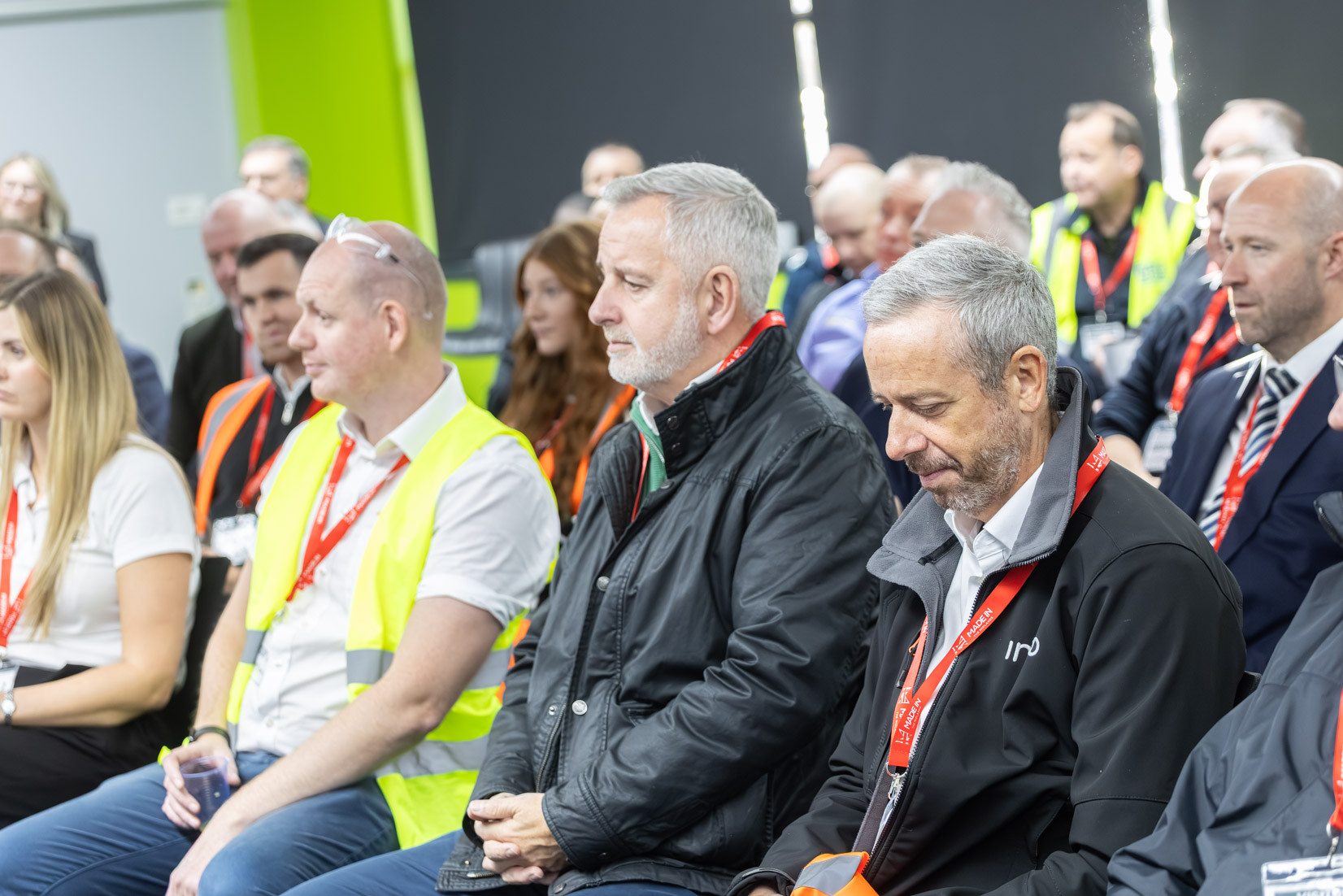
Made Members listening intently to the presentation that opened the factory tour.
The Factory Tour: Guided by the Team Who Operate It
Equipped with PPE, guests were divided into groups led by Sertec’s knowledgeable team: Sam Sadler, Production Manager; Daryl Mir, Quality Manager; Daniel Lees, Logistics Manager; and Alex Statcu, Shift Coordinator. Each guide offered perspective drawn from real daily operations, giving the tour an authenticity rarely found in more formal settings.
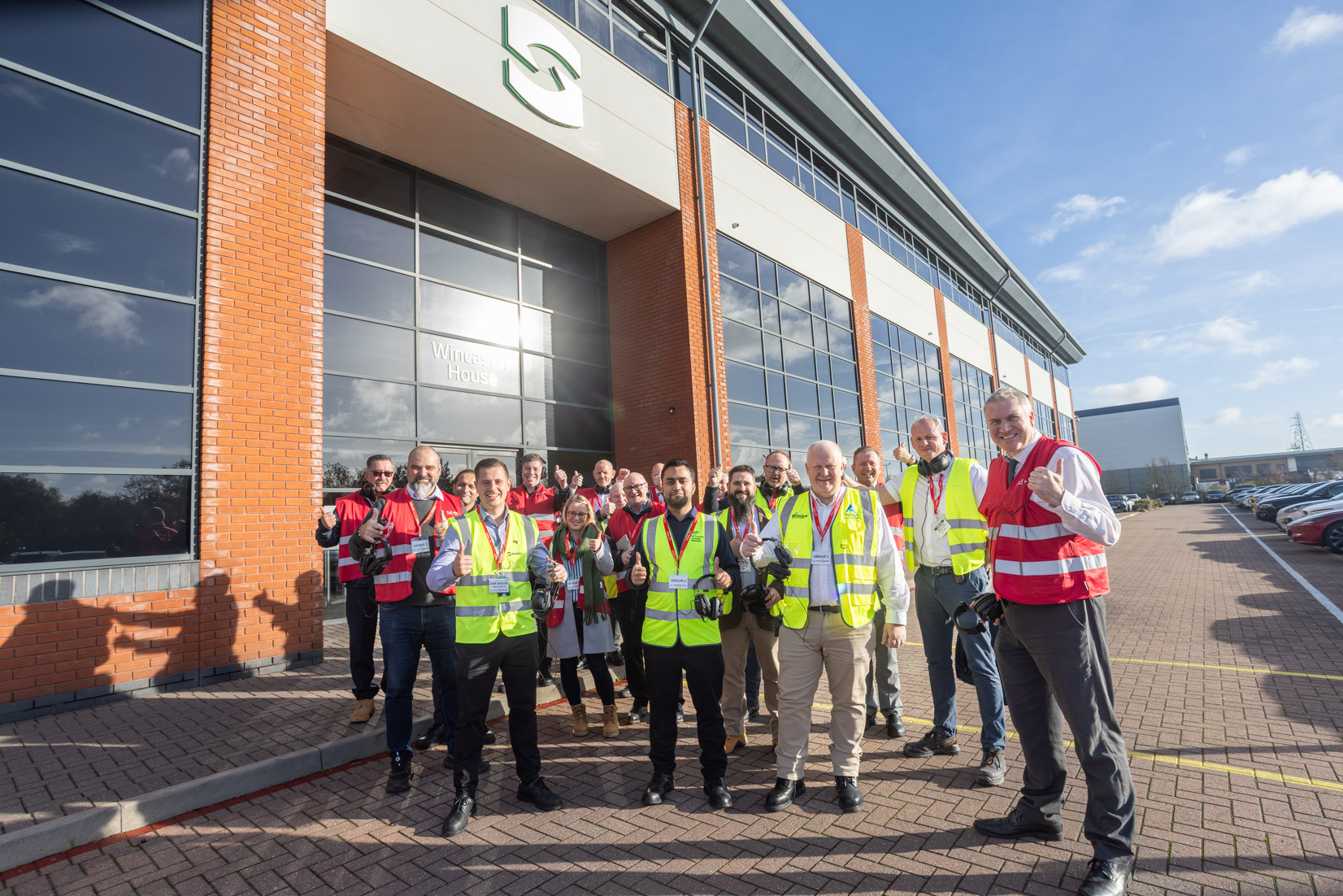
Group One on the move – Production Manager Sam Sadler leading the way into Wincaster House.
The Bus Bar Area - A Running Line Brought to Life
The first major stop was the lattice bus bar line, a fully operational process supplying components for the Range Rover Sport battery pack. As the group entered, the line was running behind the guarding, its rhythmic movement forming a steady backdrop while the guides talked visitors through each stage.
They explained how aluminium and copper elements are prepared, how the staking stations lock the assembly, and how built-in inspections verify each step before a part moves forward. Standing beside the cycling process brought a new level of understanding, with the commentary translating what usually moves too quickly into a clear, structured view.
One attendee remarked quietly, “You don’t realise how much goes into something hidden inside a battery pack.” It summed up the room’s reaction - a sudden appreciation for the sophistication behind a component most people will never see, but every EV depends on.
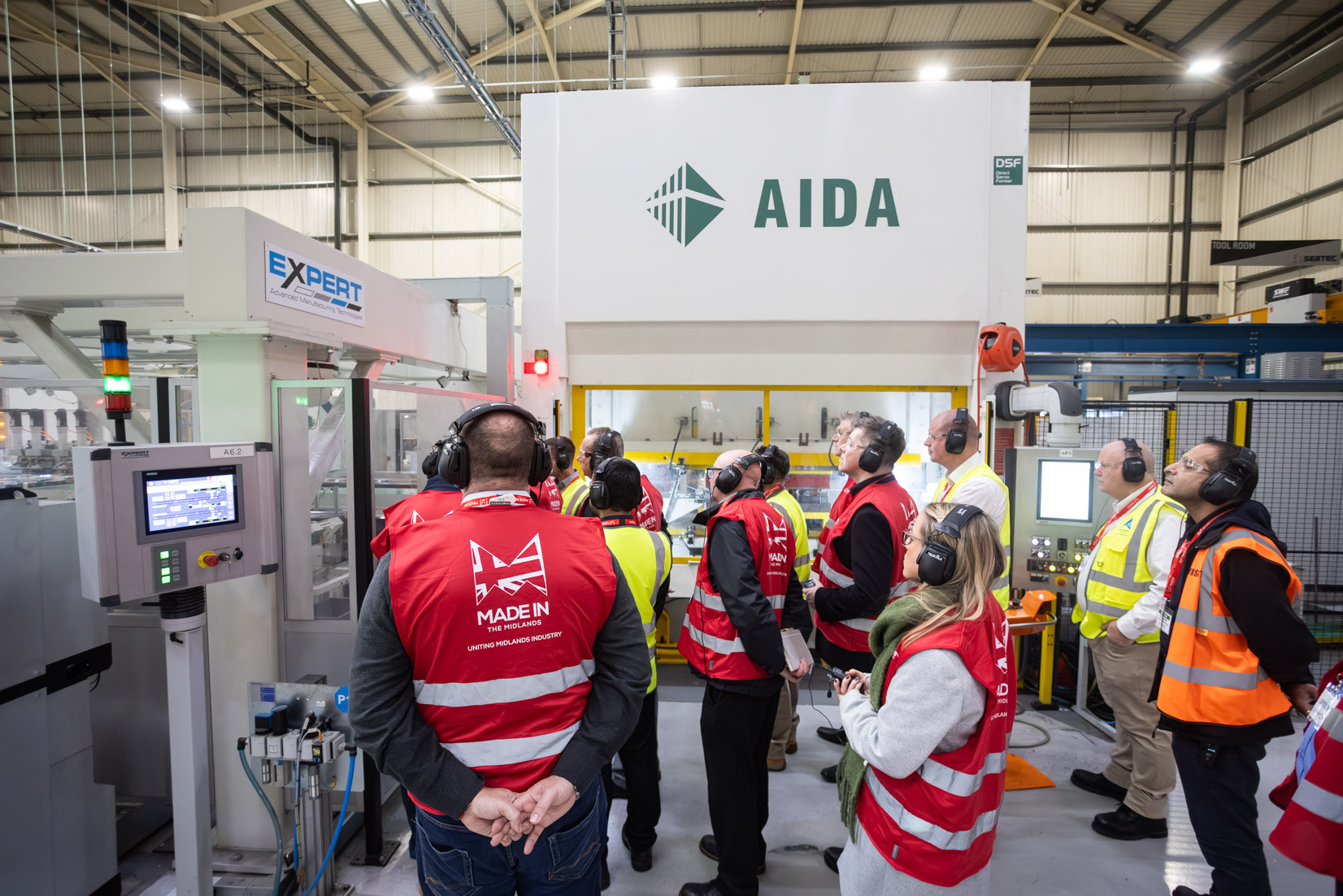
Made Members witnessing Sertec’s manufacturing in action during the factory tour.
The EV Installation Area - Preparing for 2026
The tour then moved into the EV installation area, which is currently in the early stages of development. The space was mostly open, with the first structural elements of the new equipment visible. Richard Edwards, Head, of Group Assembly Engineering, explained how two new EV lines, each designed for multi-million-unit annual output, will occupy the hall once fully commissioned.
He outlined where the main line, its sister line, and the future coating and dielectric processes will sit, and confirmed that installation is progressing toward becoming fully operational in 2026. While no machinery was running at this stage, the walkthrough conveyed the scale and ambition behind Sertec’s next major manufacturing capability.
The VAR Studio - Innovation Rooted in Clarity
From there, visitors stepped into the VAR Studio, an in-house quality system inspired by football’s video-assisted refereeing. Introduced as part of Chris Durrant’s continuous improvement programme, the system gives real-time clarity during potential process deviations. When something does not look right, the system freezes the process and alerts a quality operator, who reviews the footage from the moments leading up to the issue before resetting the line.
“It’s just for quality purposes, not for any disciplinary action,” explained Lawrence Nyame, the VAR inspector, as he demonstrated how the system works. “It stops the process so we can check the footage and make sure the part is right before anything moves forward.” The results have been striking: missing fasteners reduced by 44 percent in the first year and now sitting at around 99 percent improvement. For many attendees, this blend of simplicity and clarity was one of the morning’s standout examples of Sertec’s innovation mindset.
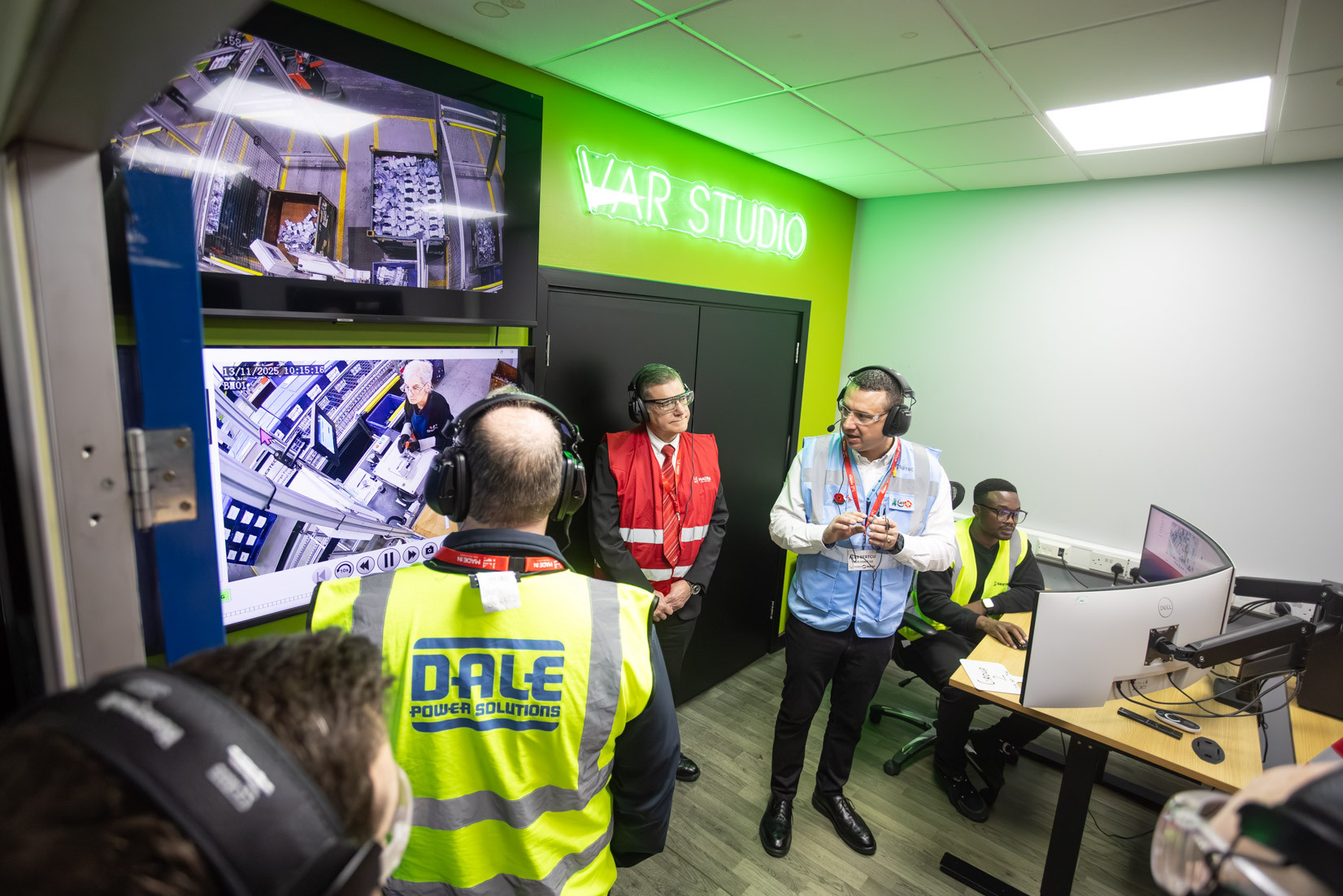
Inside Sertec’s VAR Studio, Alex Sfatcu leads the demonstration while Lawrence Nyame showcases how the replay system supports real-time quality decisions.
The Dojo - Training Built Around Real Life
The final stop was the Dojo, Sertec’s immersive training area designed to simulate real production scenarios. Operators, new and experienced, learn through movement, problem-solving and tactile engagement rather than static instruction. Machines are risk-rated from green to amber to red, giving staff a clear, safe progression path.
“You can feel the vibe the moment you walk in,” one visitor commented. It was true - the Dojo felt alive. As Dylan Enfield, Continuous improvement Process Engineer, explained, “It’s not about how good someone is when they join us. It’s about how good we are at training them.”
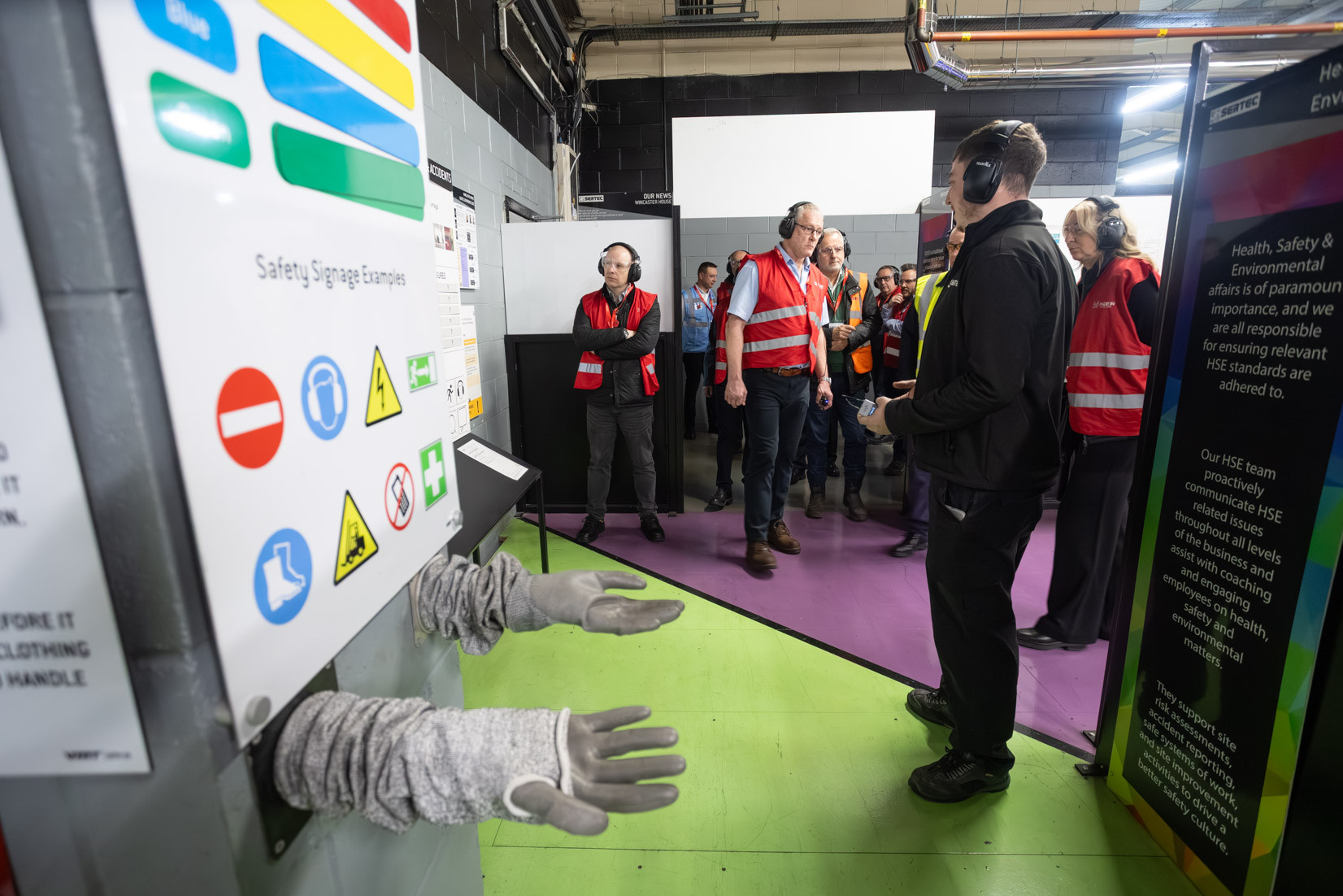 In the Dojo training area, Dylan Enfield, Continuous Improvement Process Engineer, walks members through Sertec’s hands-on learning and safety systems.
In the Dojo training area, Dylan Enfield, Continuous Improvement Process Engineer, walks members through Sertec’s hands-on learning and safety systems.
Open Dialogue - Q&A
The morning closed with a Q&A that touched on several themes raised during the presentations and tour. Guests asked about Bamboo’s employee-led development and Sertec’s early trials with AI in documentation and standardisation, as well as how ideas from the shop floor influence major investments through the company’s engagement committee and suggestion scheme. The discussion then turned to automation and the future shape of roles within the business, with Adam emphasising Sertec’s transparent approach and the support offered to colleagues as processes evolve. As he put it, “When one door closes in this business, another opens,” a line that captured the people-first mindset running through every part of the morning.
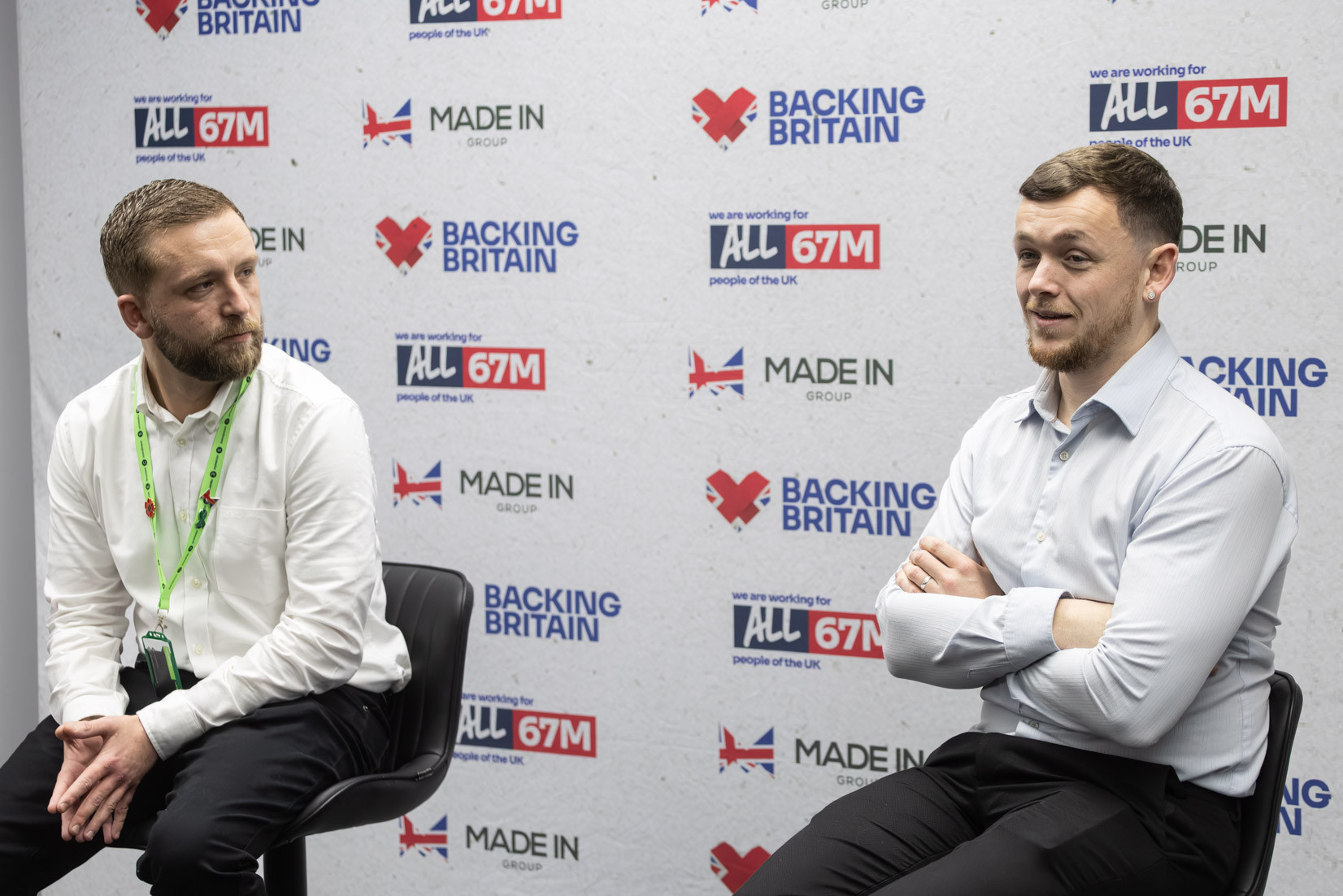
Operations Manager Adam Walker and Continuous Improvement Manager Chris Durrant respond to member questions during the closing Q&A session.
Closing Reflections - and a Look Toward 2026
Before guests departed, the Sertec team shared a final update that brought genuine warmth to the room. The Heavy Stampings site, located just a short walk away, has recently been renamed Grantham House, a decision made by employees to honour Grant Adams’ 40th anniversary with the business. The site is now undergoing a major transformation aligned with Sertec’s future strategy.
As Sertec looks ahead, the business is also preparing for its next chapter of leadership. Group Operations Director Ben Higgins is set to become the company’s next CEO, a transition that reflects the organisation’s commitment to developing its own people and strengthening continuity at a pivotal moment in its growth.
Guests were then invited to return in 2026 for Part Two of the Sertec story, a dedicated tour of the newly revitalised Grantham House. If Wincaster House shows who Sertec is today, Grantham House will show who Sertec is becoming.
As visitors stepped back into the cold November air, the feeling was unmistakable: this was not just a tour. It was a glimpse into the next era of British manufacturing - and the people determined to shape it.
